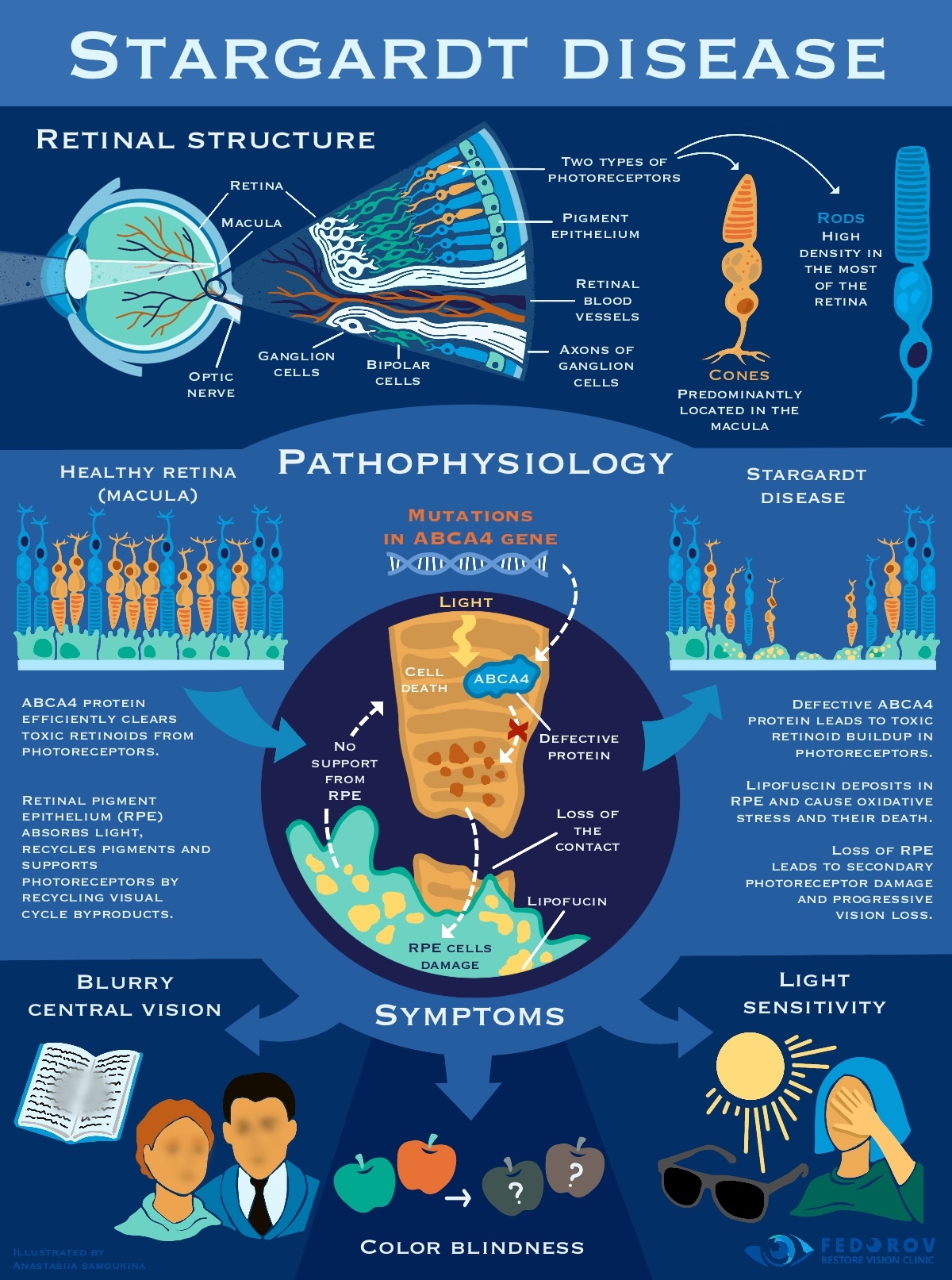Stargardt Disease Infographic: Understanding Inherited Vision Loss
Explore key information about Stargardt disease through our expert-reviewed infographic examples. This visual guide outlines the genetic basis, changes in the retina, and common Stargardt disease symptoms, making complex medical information accessible to patients, families, and healthcare providers.
What is Stargardt Disease?
Stargardt disease is an inherited condition affecting the macula, usually starting in young people. It occurs when the ABCA4 gene has changes, causing harmful substances to collect in the retina. This leads to loss of central vision, though side vision typically remains. Early detection through genetic testing is important for accessing Stargardt disease treatment options and potential gene therapy.
Retinal Structure
The retina is a light-sensitive layer at the back of your eye that sends visual information to your brain. Its center (macula) contains special cells for clear, colorful vision. Supporting cells called RPE help maintain healthy vision by removing waste products. In Stargardt disease, these important structures gradually break down.
How Stargardt Disease Develops
Normal ABCA4 protein removes harmful substances from vision cells. When this protein doesn't work properly, toxic materials build up, damaging vision cells. The infographic shows the difference between healthy and affected retinas, helping explain why Stargardt disease gene therapy injection treatments target these areas.
Symptoms of Stargardt Disease
- Central Vision Problems: Growing difficulty seeing details straight ahead, making reading and recognizing faces harder. Dark spots may appear in vision.
- Changes in Color Vision: Harder to see certain colors, especially reds and greens, as vision cells stop working.
- Bright Light Issues: Increased discomfort in bright settings as the macula deteriorates.
Treatment Options and How Fedorov Restore Vision Clinic May Help Improve Your Vision
While there is currently no cure for Stargardt disease, research is advancing rapidly. Clinical trials are underway for gene therapy, RNA modification, visual cycle modulators (such as Tinlarebant and ALK-001), and stem cell procedures. Support services like vision aids, special devices, and sun protection help maintain daily activities and independence.
At Fedorov Restore Vision Clinic, we offer advanced, non-invasive therapies tailored for patients with Stargardt disease and other inherited retinal conditions. Many of our patients have experienced measurable improvements in visual function, including enhanced central vision, better contrast sensitivity, and greater independence in daily life. Our individualized treatment protocols are based on the latest scientific findings and are designed to stimulate retinal cells, improve retinal signaling, and maximize your remaining vision. Read our patient success stories to learn how our approach has helped others with Stargardt disease regain confidence and quality of life. If you are seeking ways to preserve or improve your vision, our team is here to support you with expertise and compassionate care.
Interested in learning more about inherited retinal diseases? Visit our Retinitis Pigmentosa (RP) Pillar Page for an in-depth overview of symptoms, genetics, and vision improvement strategies.
This infographic and text provide clear, straightforward information about Stargardt eye disease symptoms and management options, helping readers better understand this condition and its impact on vision.
Share this infographic on your website:

